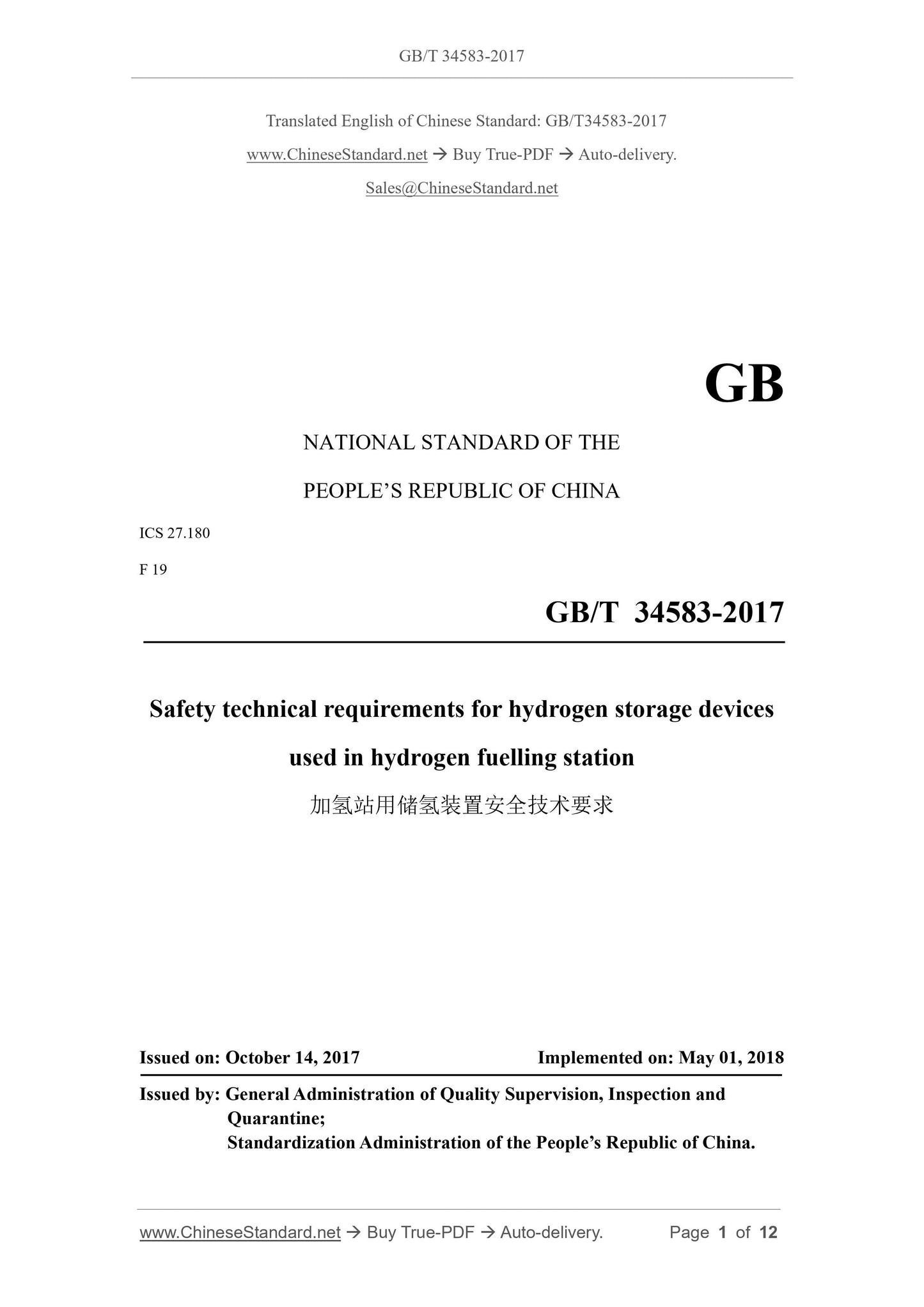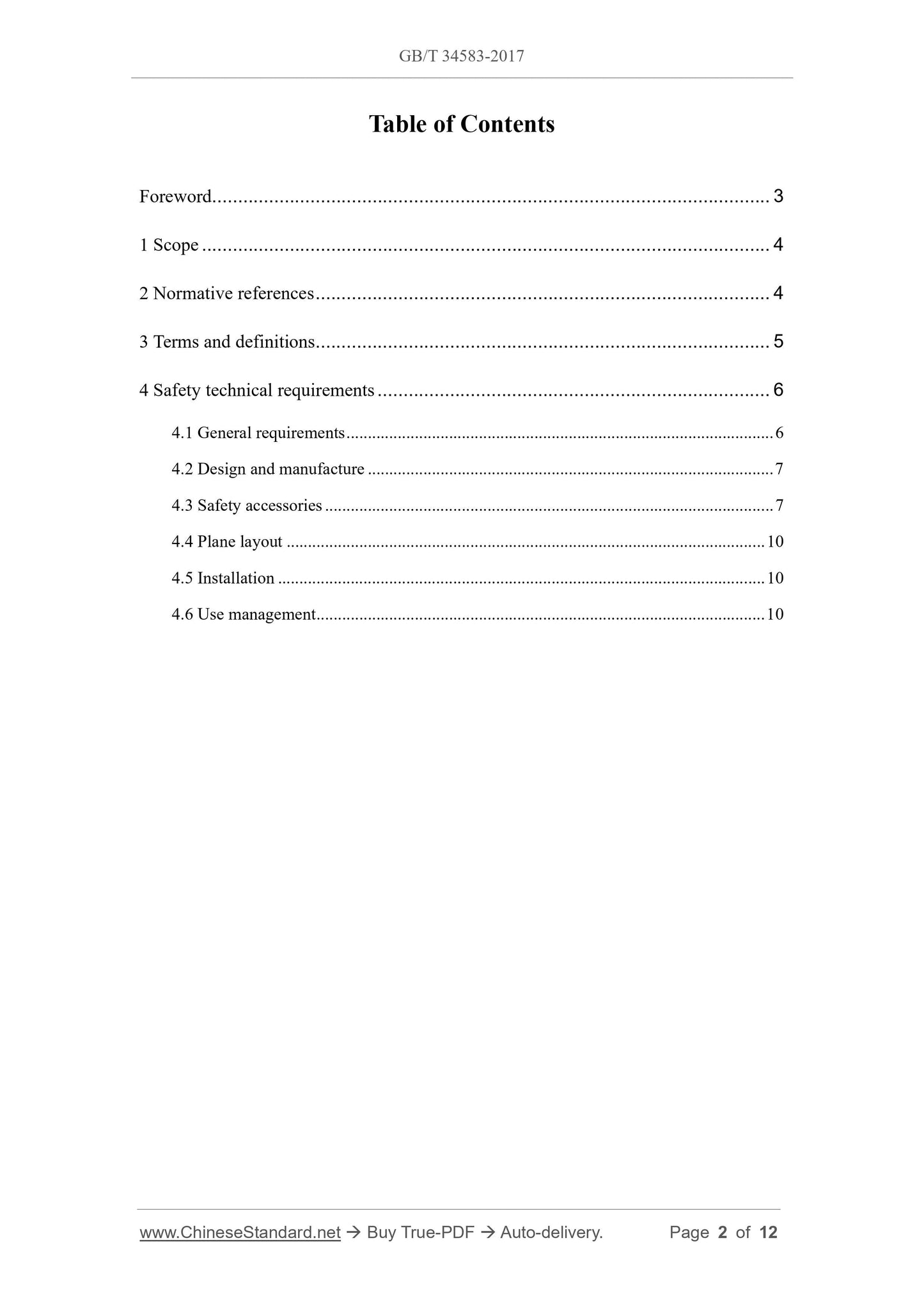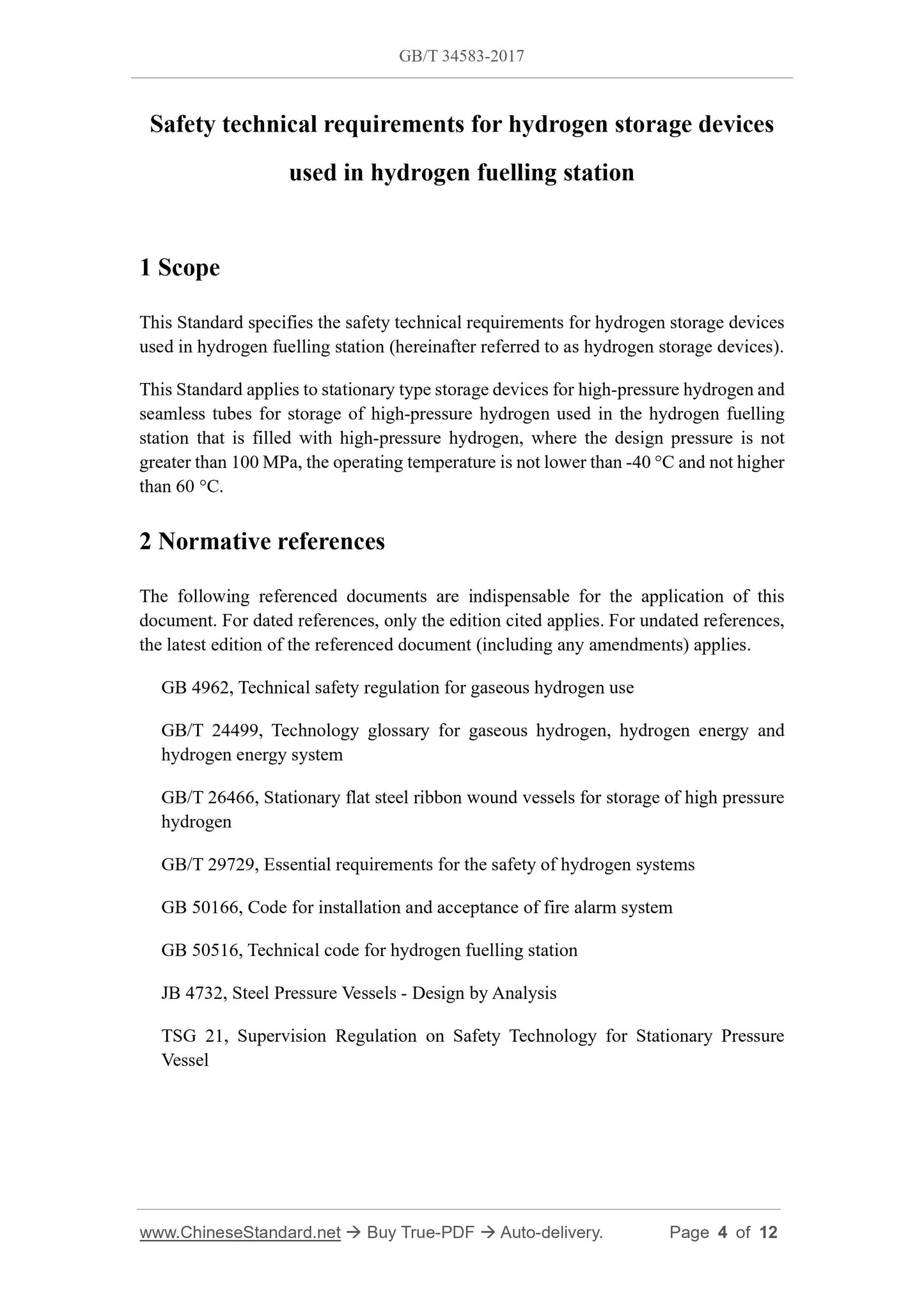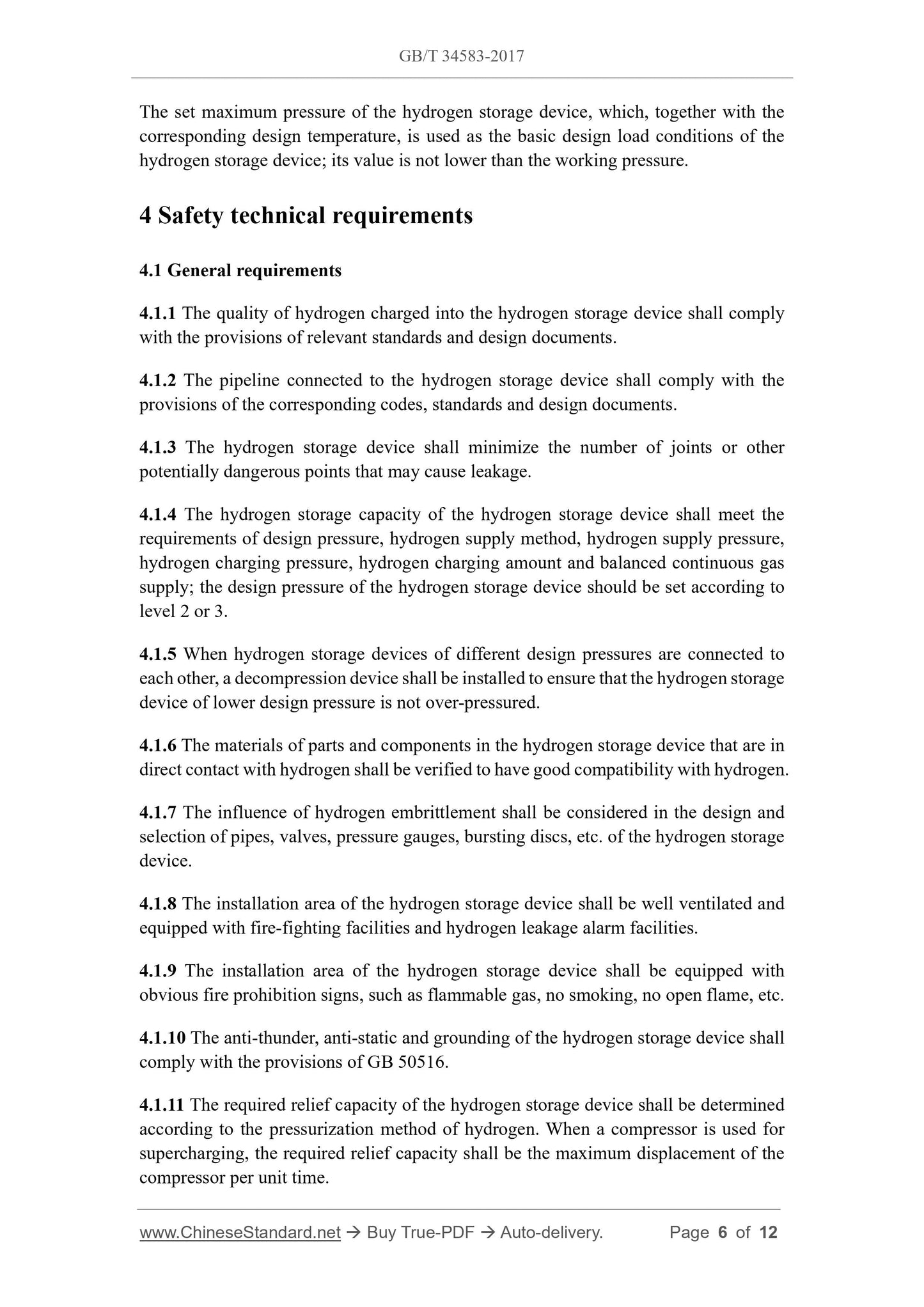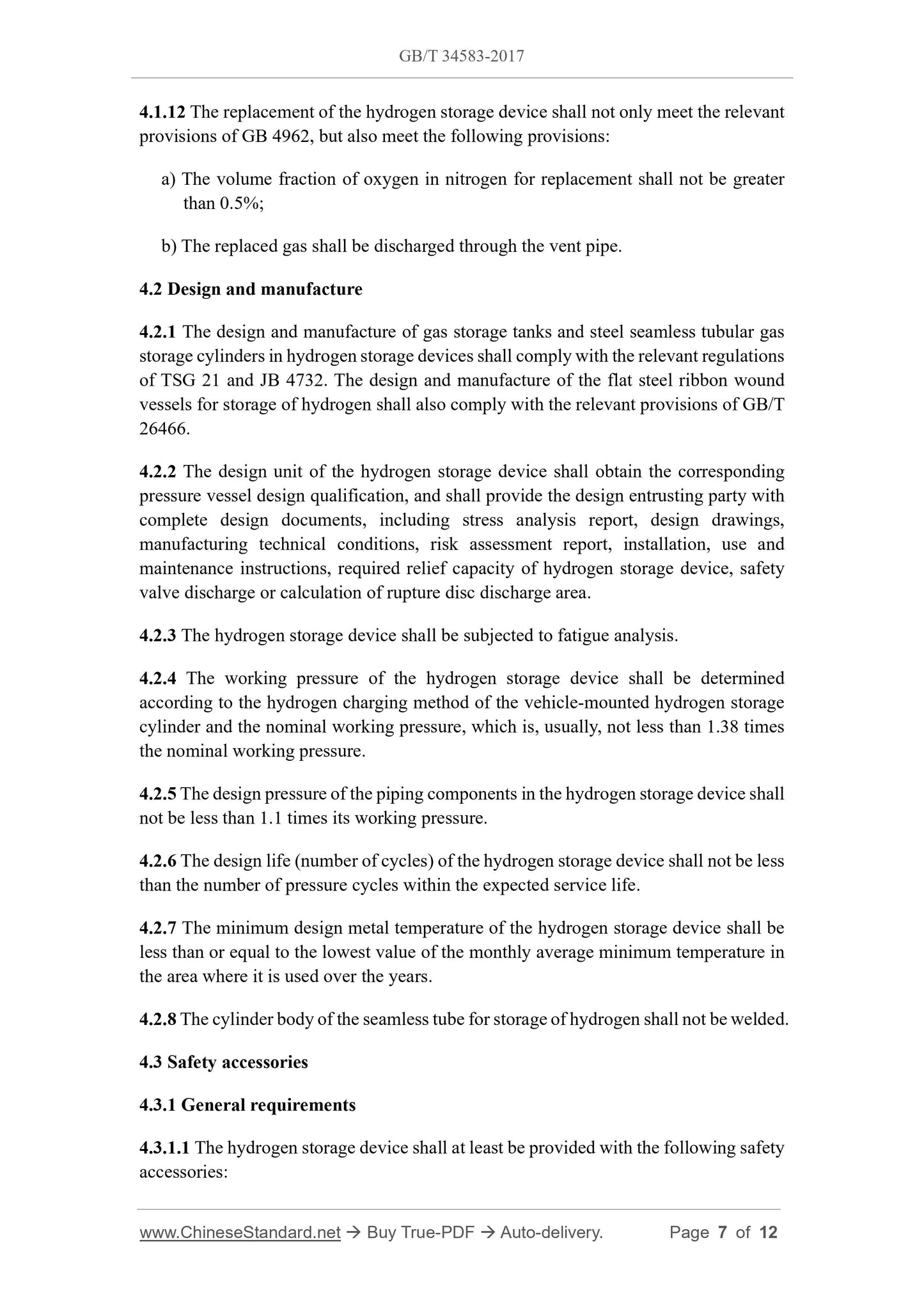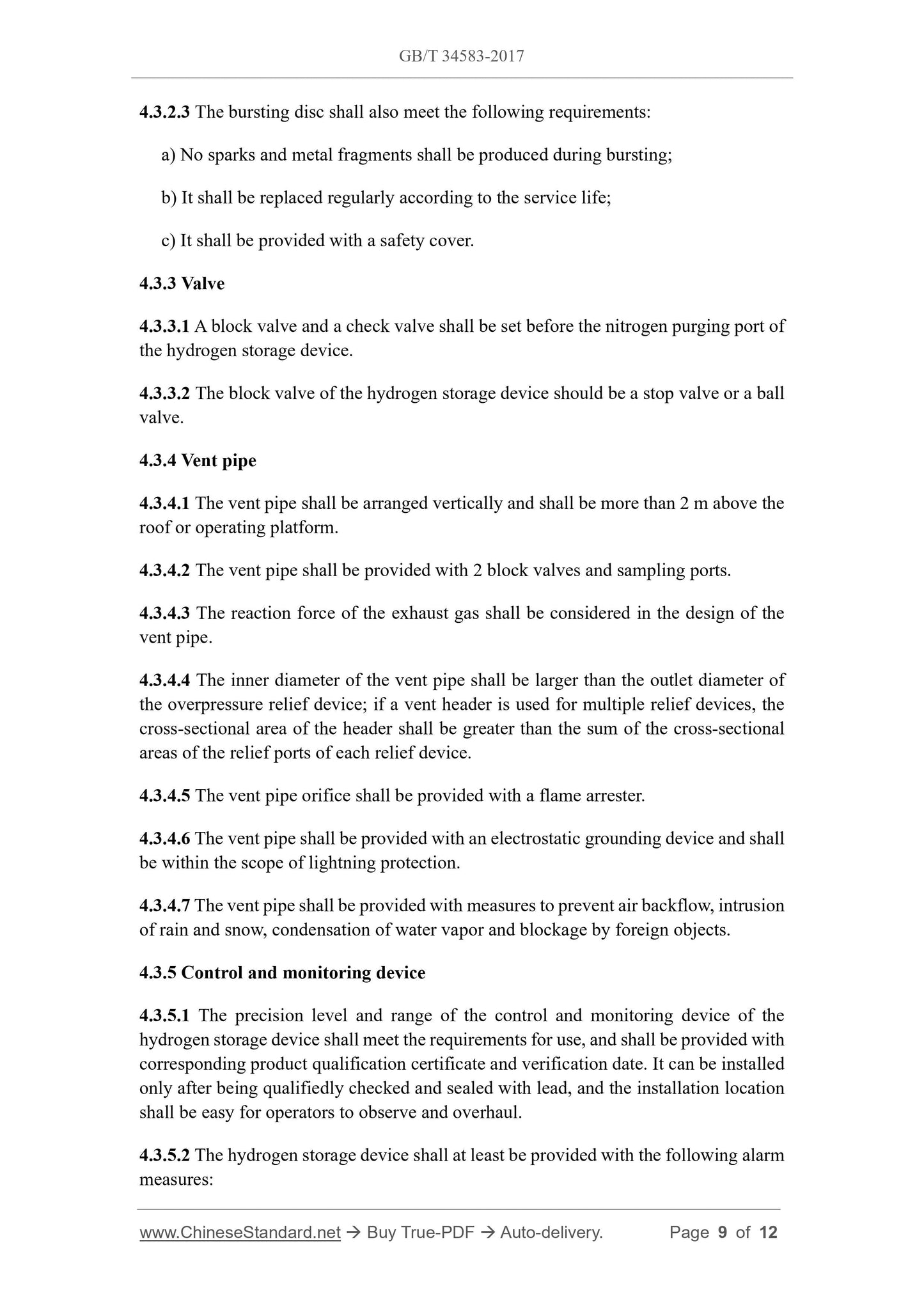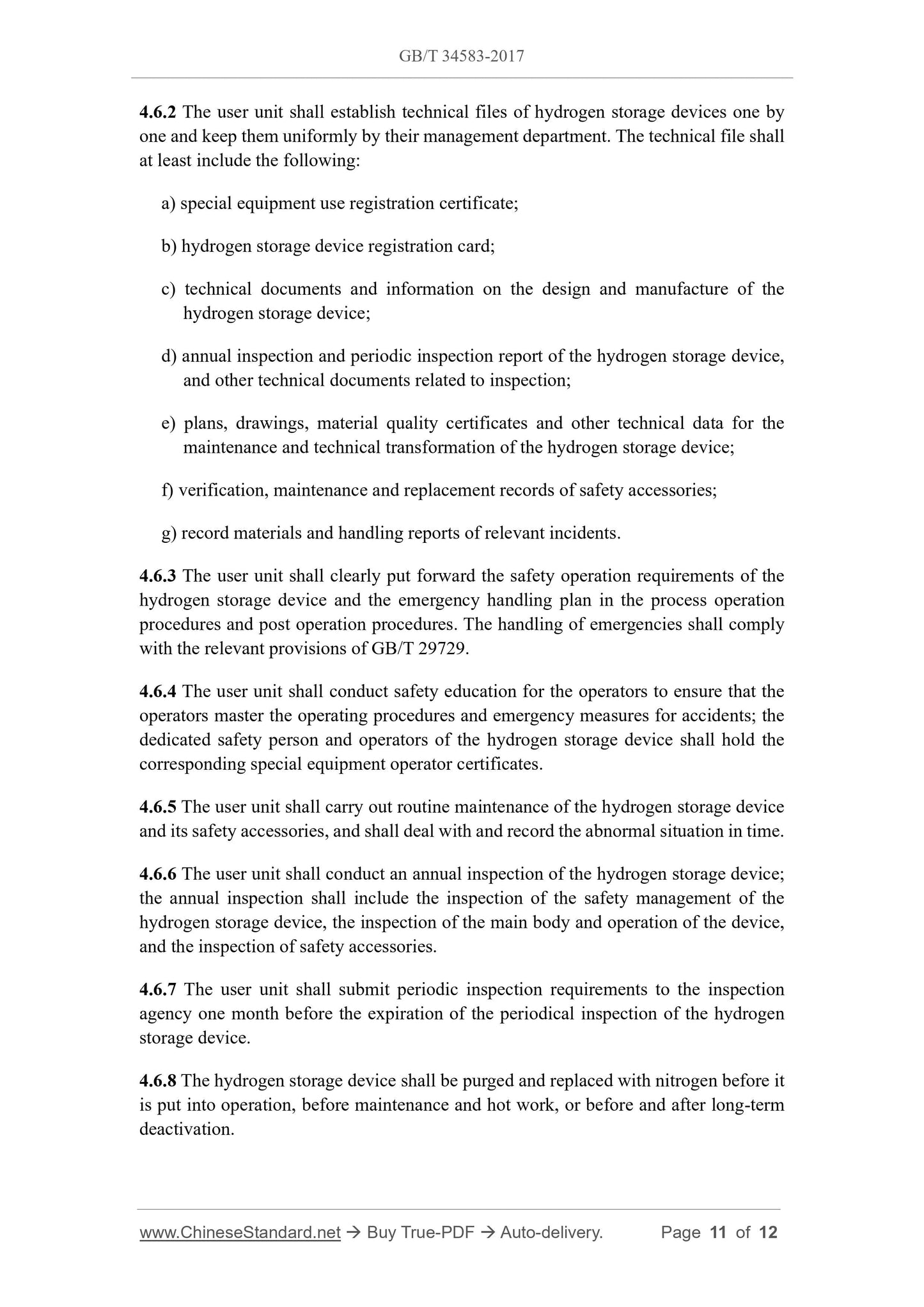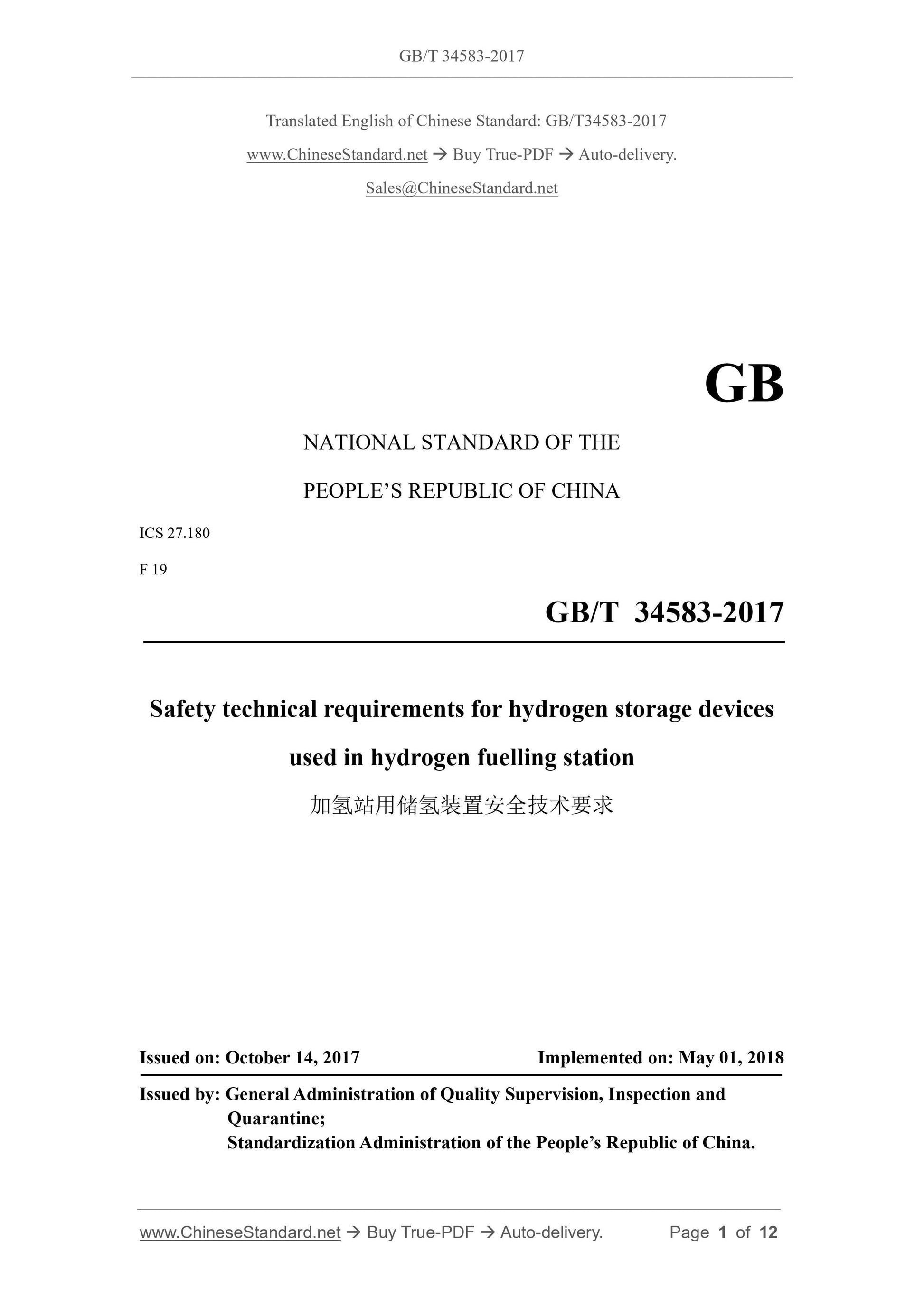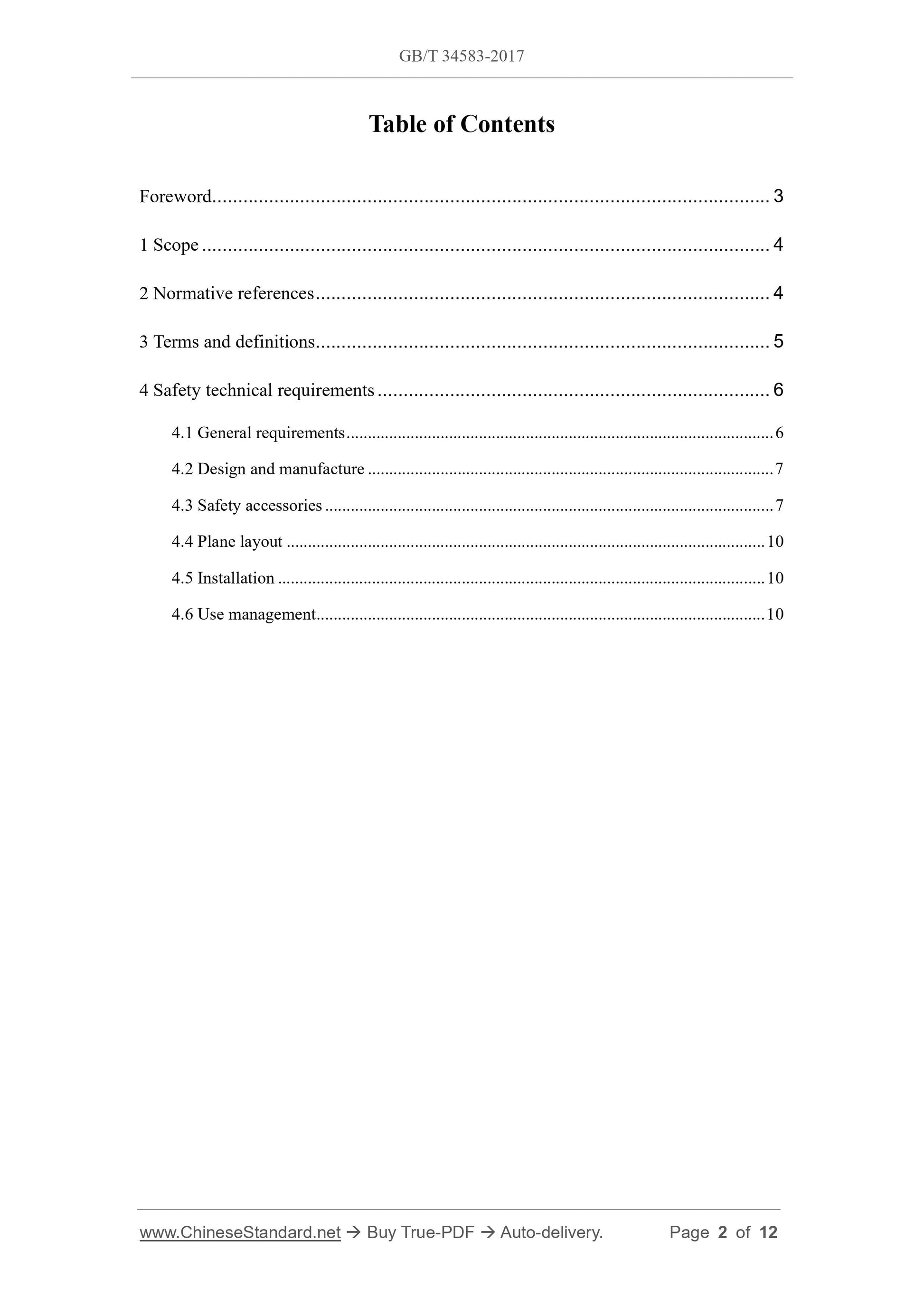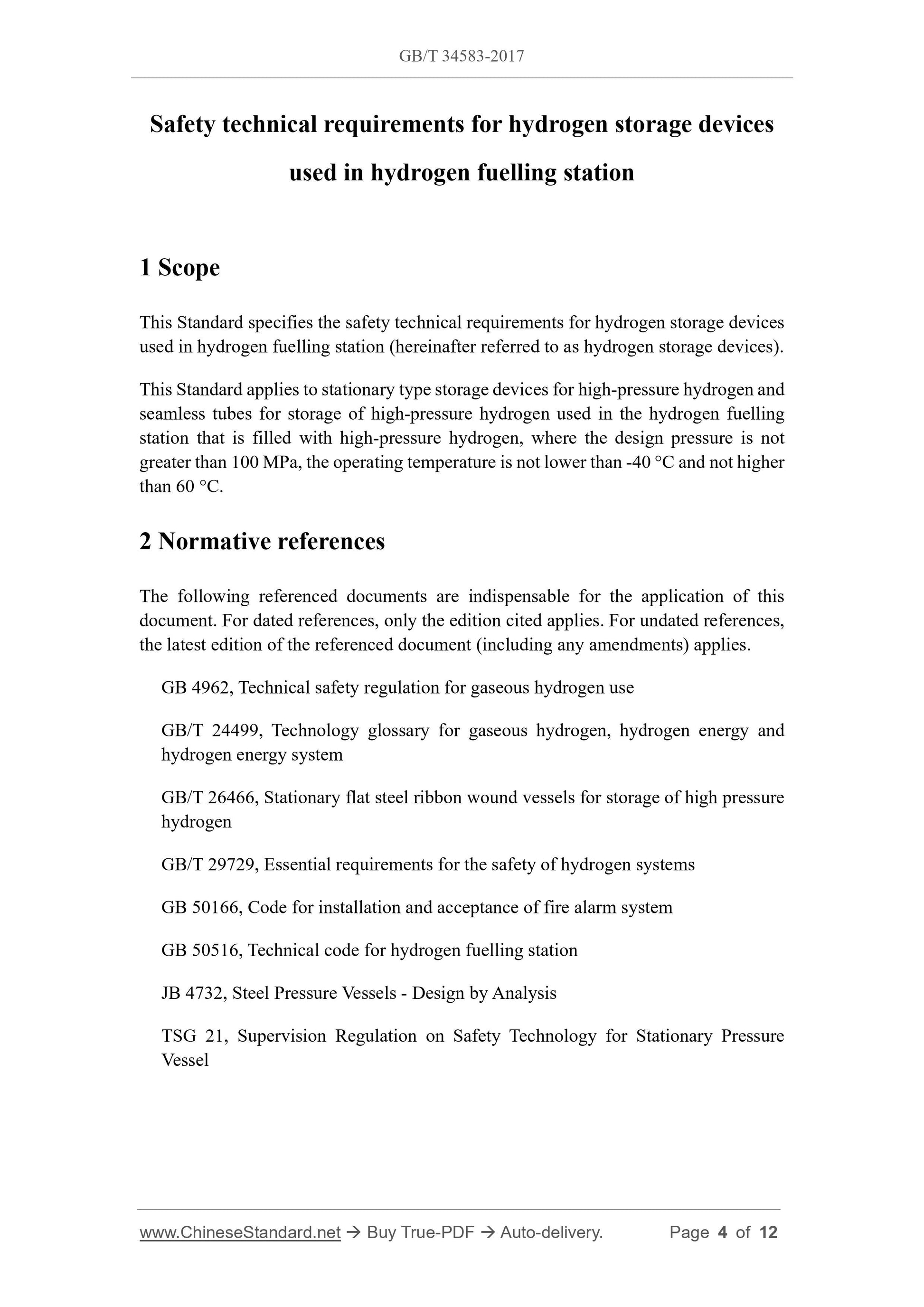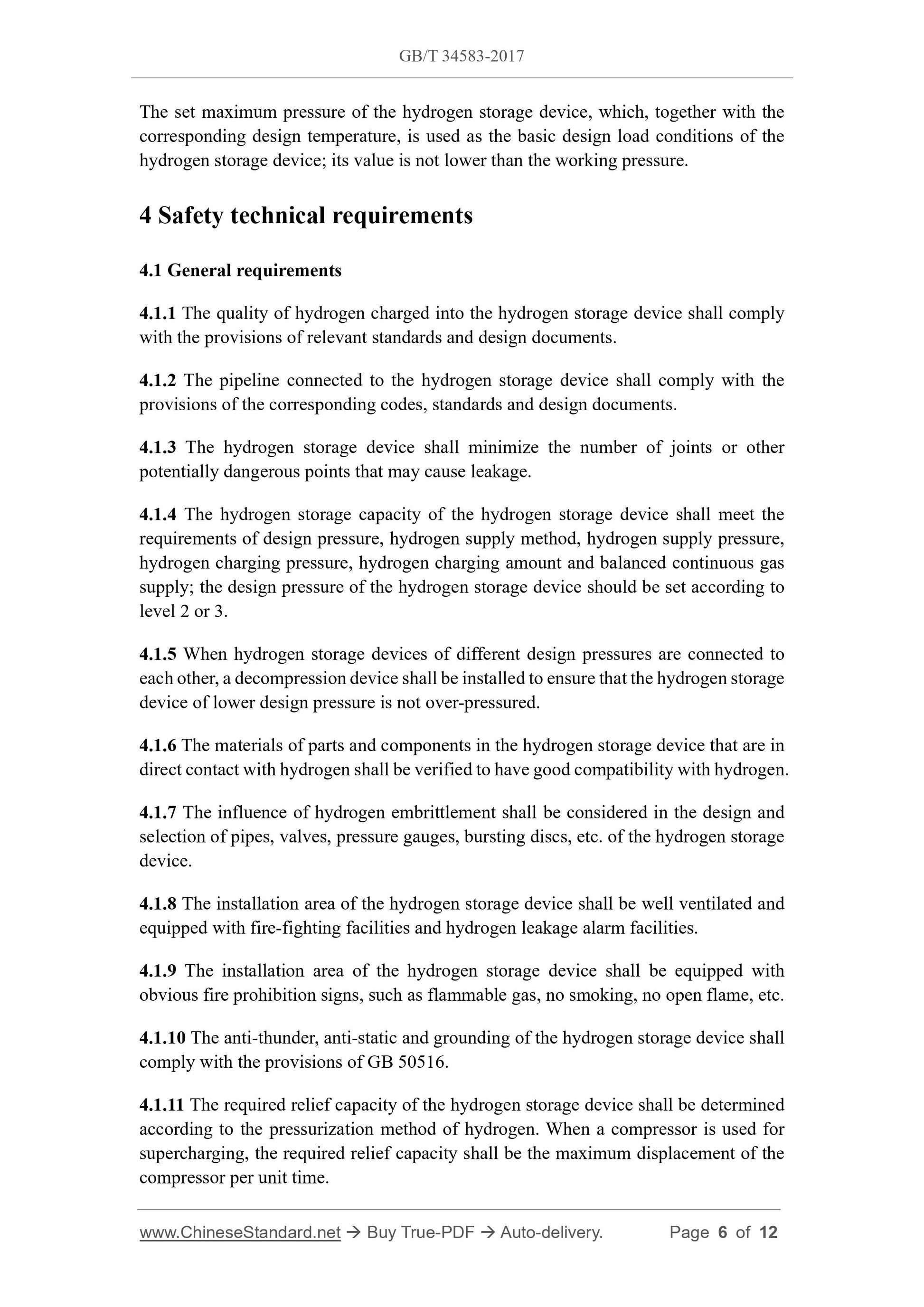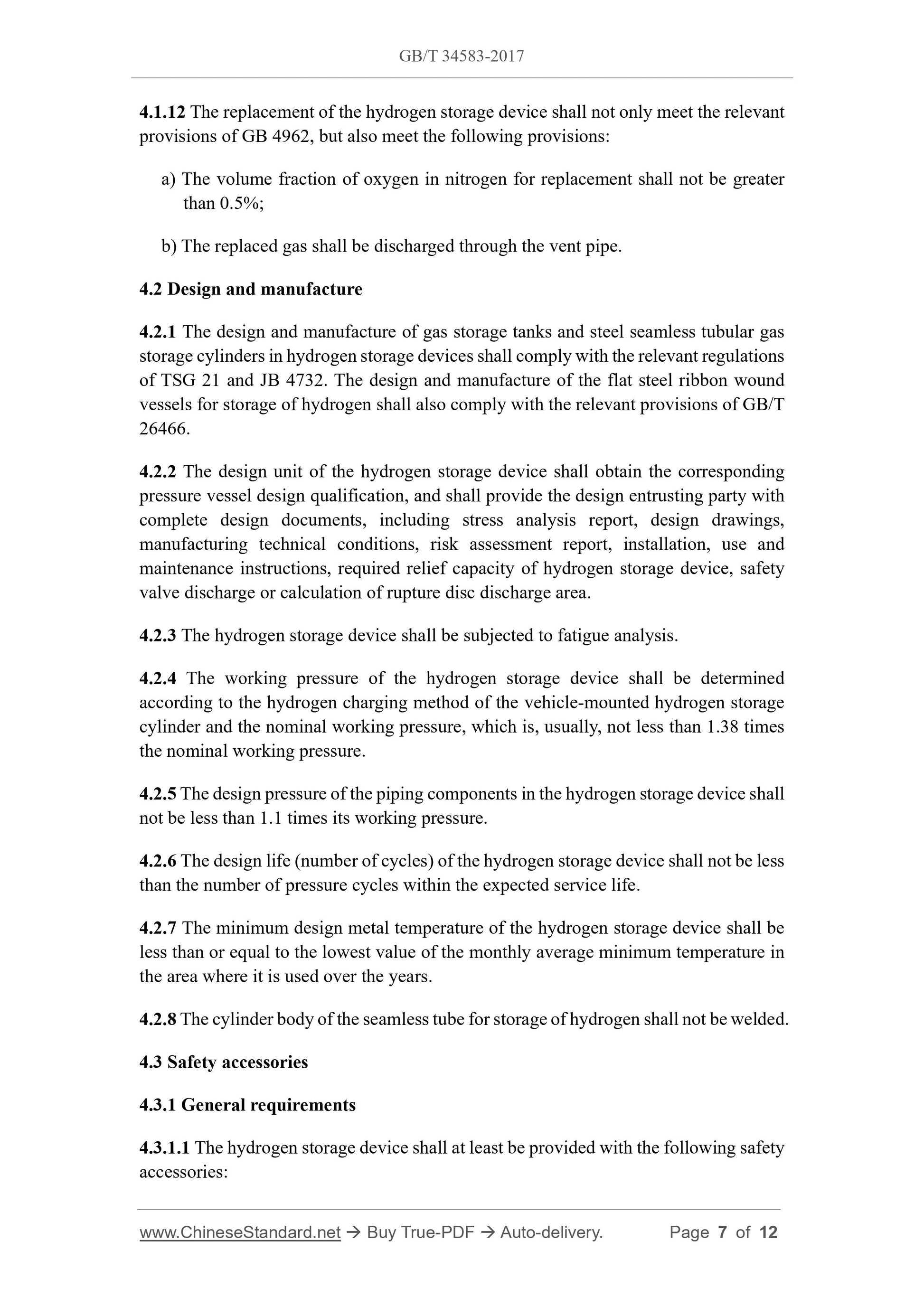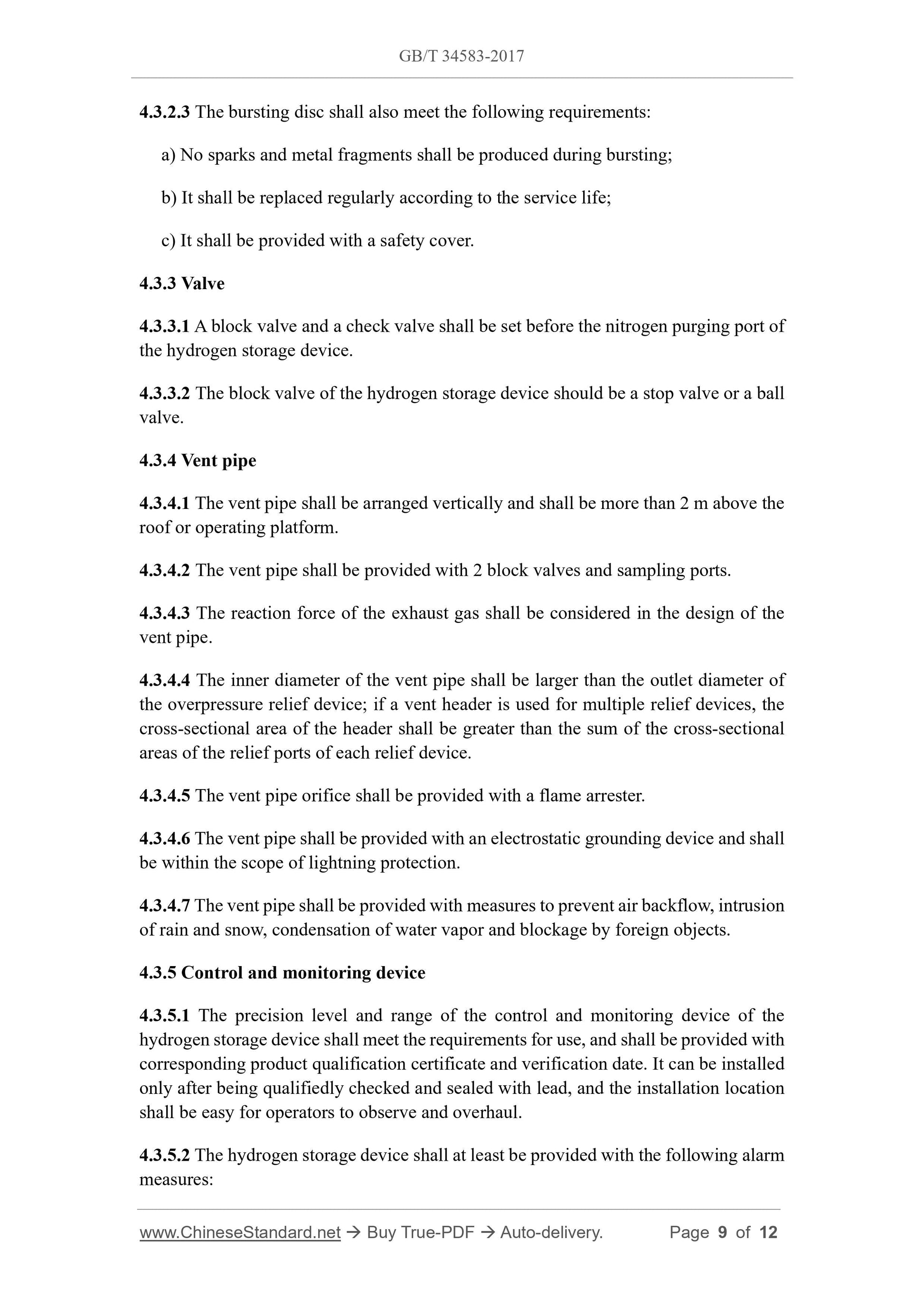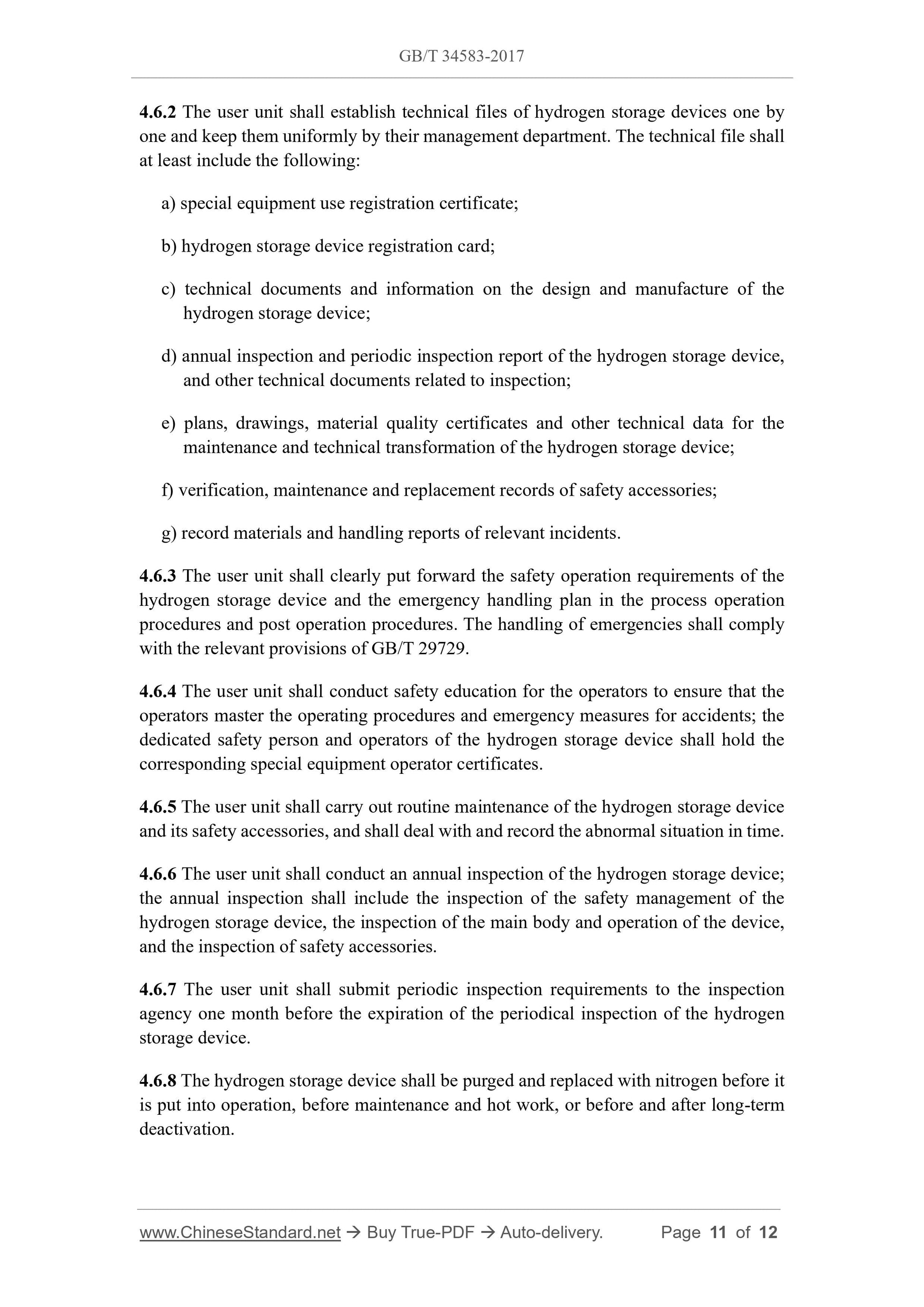1
/
of
7
www.ChineseStandard.us -- Field Test Asia Pte. Ltd.
GB/T 34583-2017 English PDF (GB/T34583-2017)
GB/T 34583-2017 English PDF (GB/T34583-2017)
Regular price
$165.00
Regular price
Sale price
$165.00
Unit price
/
per
Shipping calculated at checkout.
Couldn't load pickup availability
GB/T 34583-2017: Safety technical requirements for hydrogen storage devices used in hydrogen fueling station
Delivery: 9 seconds. Download (and Email) true-PDF + Invoice.Get Quotation: Click GB/T 34583-2017 (Self-service in 1-minute)
Newer / historical versions: GB/T 34583-2017
Preview True-PDF
Scope
This Standard specifies the safety technical requirements for hydrogen storage devicesused in hydrogen fuelling station (hereinafter referred to as hydrogen storage devices).
This Standard applies to stationary type storage devices for high-pressure hydrogen and
seamless tubes for storage of high-pressure hydrogen used in the hydrogen fuelling
station that is filled with high-pressure hydrogen, where the design pressure is not
greater than 100 MPa, the operating temperature is not lower than -40 °C and not higher
than 60 °C.
Basic Data
| Standard ID | GB/T 34583-2017 (GB/T34583-2017) |
| Description (Translated English) | Safety technical requirements for hydrogen storage devices used in hydrogen fueling station |
| Sector / Industry | National Standard (Recommended) |
| Classification of Chinese Standard | F19 |
| Classification of International Standard | 27.180 |
| Word Count Estimation | 10,198 |
| Date of Issue | 2017-10-14 |
| Date of Implementation | 2018-05-01 |
| Issuing agency(ies) | General Administration of Quality Supervision, Inspection and Quarantine of the People's Republic of China, Standardization Administration of the People's Republic of China |
Share
